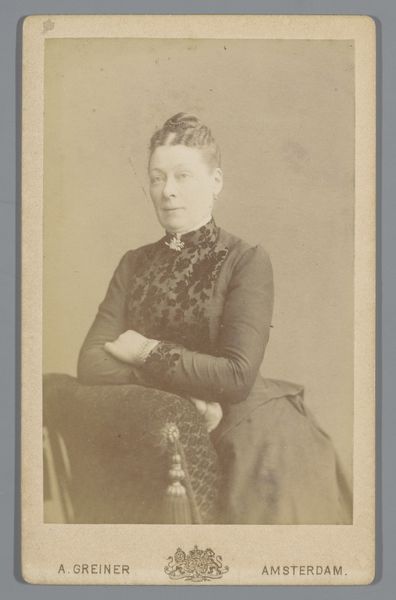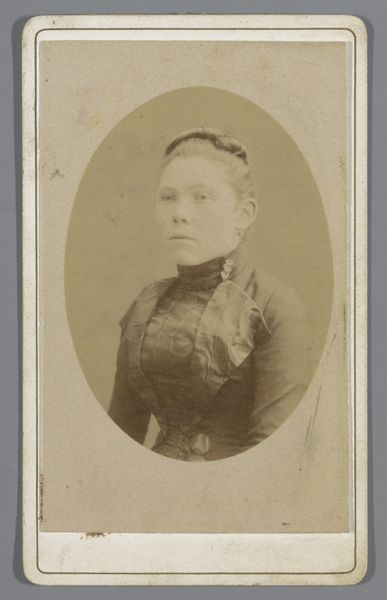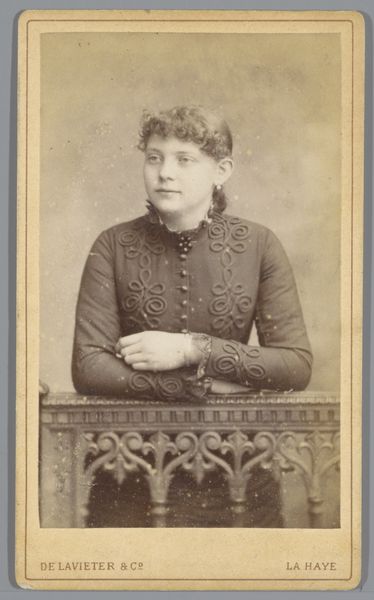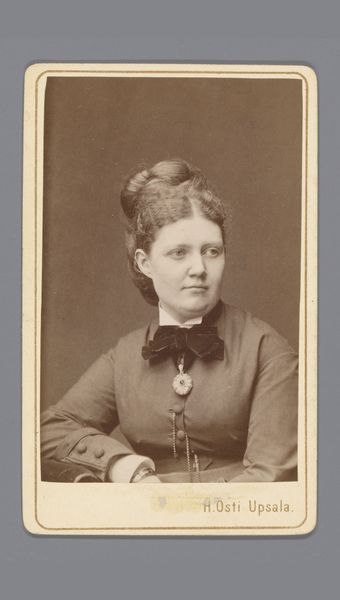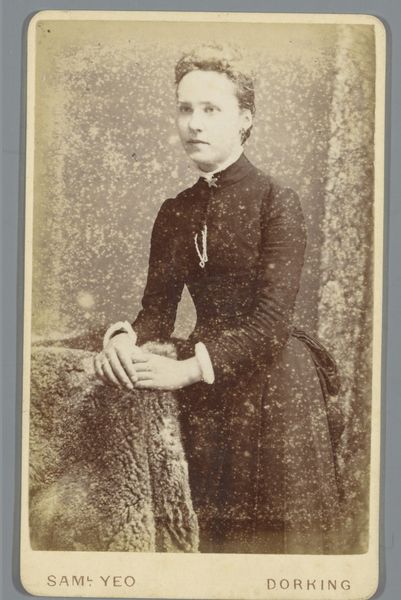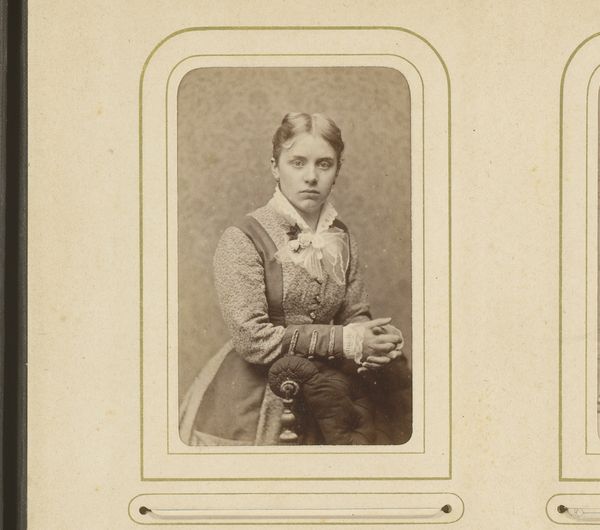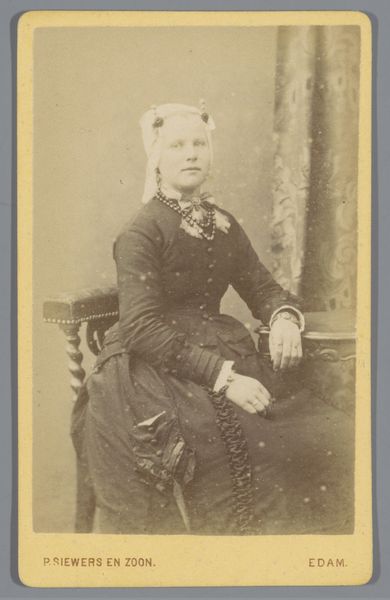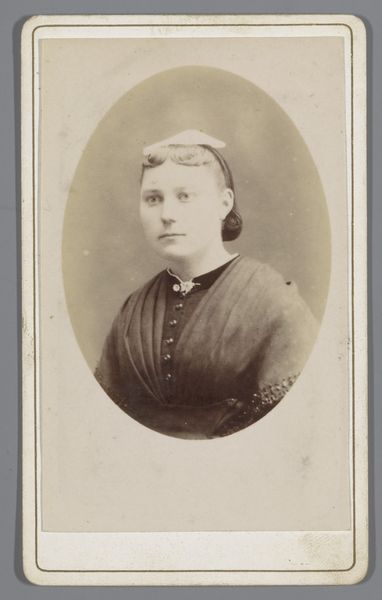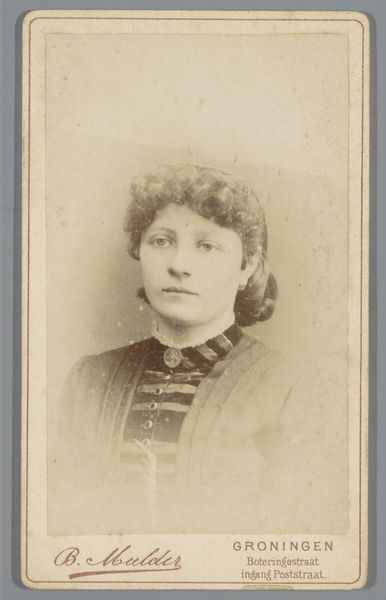
photography, gelatin-silver-print
#
portrait
#
photography
#
coloured pencil
#
gelatin-silver-print
Dimensions: height 104 mm, width 65 mm
Copyright: Rijks Museum: Open Domain
Curator: Before us hangs "Portret van een onbekende vrouw," attributed to Albert Greiner, possibly dating back to 1880. It's a gelatin-silver print, offering a glimpse into a past life. Editor: My first impression is one of quiet dignity, maybe a touch of melancholy. The subdued tones really enhance the sense of a bygone era. Curator: Absolutely. The gelatin-silver process was revolutionary, enabling finer details and a wider tonal range than earlier photographic methods. Considering that it’s marked ‘A. Greiner, Amsterdam’ along the bottom edge, we get insight into studio practices and how photography was becoming a trade. Editor: Thinking about it more, I wonder who this woman was? In this photograph, there's a tangible sense of distance but I want to be able to look into her life. Photography in the late 19th century allowed for wider accessibility for diverse communities. But the access for the rich, I argue, were portraits with a lot of staging such as that one we see here. Curator: That's precisely where a materialist lens is invaluable. What fabrics comprise her clothing, and who was employed to create them? Are we looking at mass-produced garments or something bespoke, reflecting a certain socio-economic class? Her jewelry might even have the mark of a crafts guild or merchant. This gives a good argument for the idea of gendered economy back then. Editor: And who determined the aesthetic ideals of the era that shaped her pose, her expression? There's a very contained presentation here, reflective of the expected modesty and grace of women. It is interesting that you mentioned a 'gendered economy' for indeed it does point to how social expectations directly correlated with their economic means. Curator: By delving into these production networks and systems of consumption, we bring the image to life, turning it from a mere face into a nexus of social and economic histories. Editor: Agreed. The convergence of all this offers a really richer and more complex narrative—shedding light on both this woman's world, and our own.
Comments
No comments
Be the first to comment and join the conversation on the ultimate creative platform.
